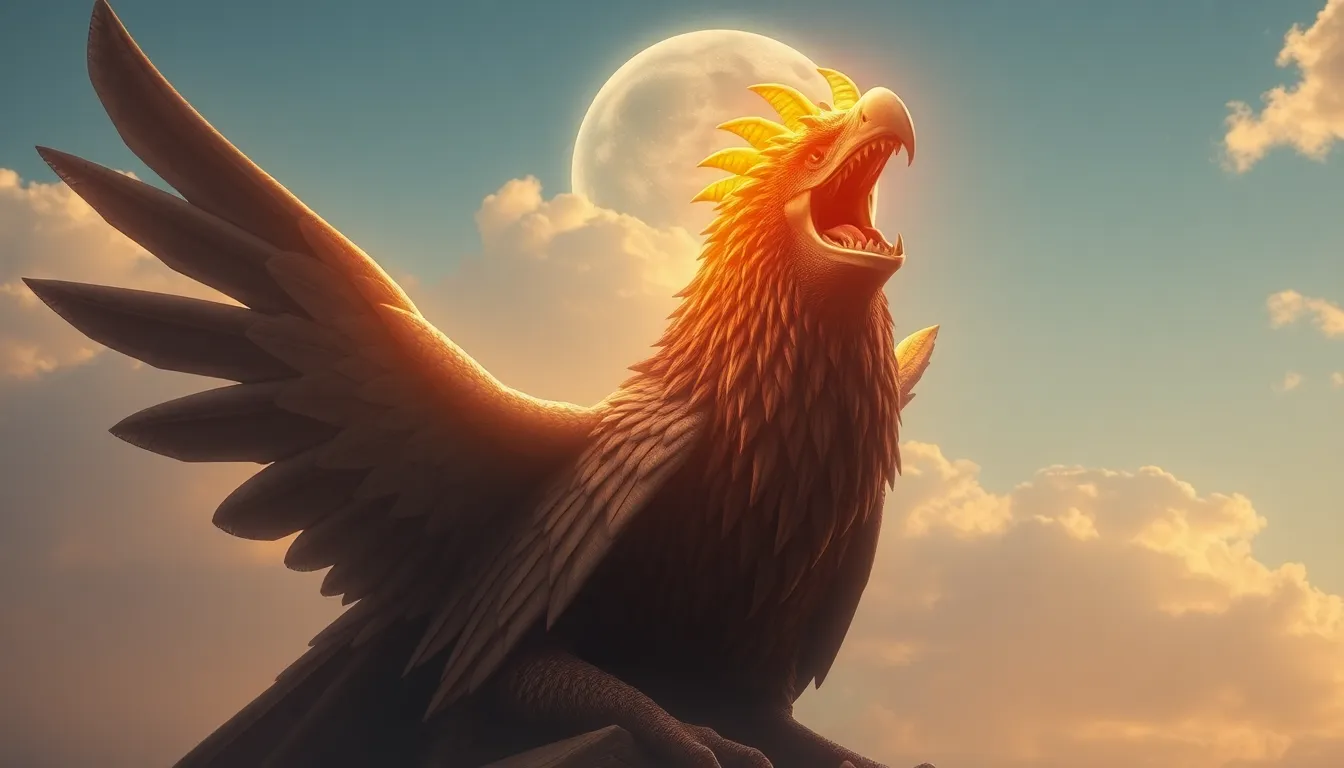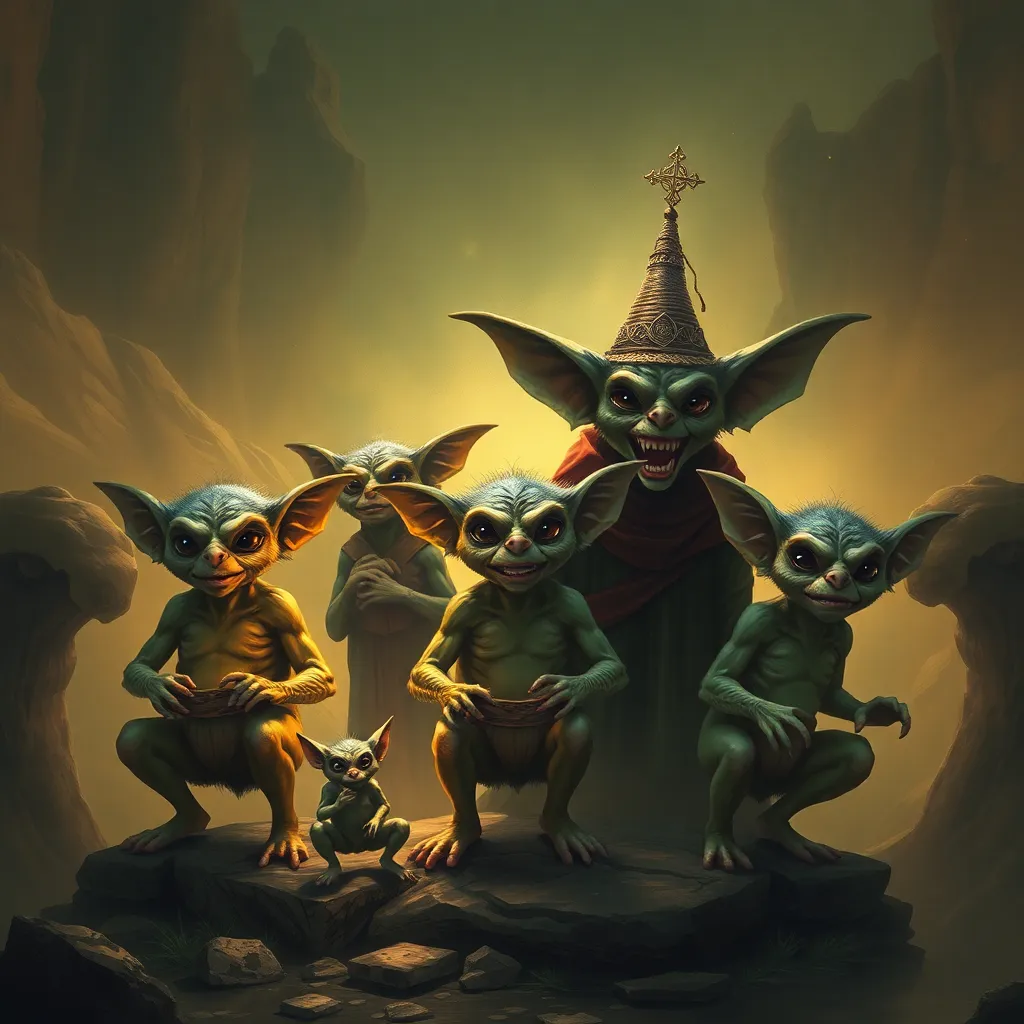The Roc’s Role in Islamic Cosmology: A Creature of the Sky
I. Introduction
The Roc is a mythical bird of immense size and strength that holds a significant place in Islamic tradition. Often depicted as a colossal creature capable of carrying off elephants and ships, the Roc symbolizes power and the sublime nature of creation. In Islamic cosmology, the Roc is not merely a fantastical creature but a representation of the divine order and the grandeur of the heavens.
This article aims to explore the Roc’s role within Islamic cosmology, examining its historical context, symbolism, and significance in both traditional and contemporary cultures.
II. Historical Context of the Roc in Islamic Literature
The origins of the Roc can be traced back to pre-Islamic mythology, where it appears as a formidable avian creature in various tales across the Middle Eastern and Asian regions. As Islamic literature developed, the Roc was integrated into the narrative fabric of the culture.
- Origins in Pre-Islamic Mythology: The Roc’s roots can be found in ancient Persian and Arabian lore, where similar giant birds were mentioned in various tales.
- References in Key Islamic Texts: While the Roc is not explicitly mentioned in the Qur’an, it appears in various Hadith and Islamic folklore, illustrating its significance in Islamic narratives.
- The Roc’s Evolution: Over time, the Roc evolved in storytelling, becoming a symbol of divine intervention and cosmic power in works like “One Thousand and One Nights.”
III. The Roc in Comparative Mythology
In the realm of comparative mythology, the Roc shares similarities with other mythological creatures, notably the Garuda in Hinduism. Both creatures are depicted as powerful avians, but they hold different cultural significance and attributes.
- Similarities with Other Mythological Creatures: Like the Garuda, the Roc is often portrayed as a protector and a creature of the sky, possessing extraordinary strength and speed.
- Differences in Cultural Interpretations: While the Garuda is a symbol of wisdom and enlightenment in Hinduism, the Roc embodies divine power and is often seen as a guardian against chaos in Islamic thought.
- The Roc’s Unique Place: The Roc occupies a distinctive position in Islamic cosmology, representing a bridge between the earthly realm and the divine heavens.
IV. Symbolism of the Roc in Islamic Thought
The Roc serves as a potent symbol in Islamic thought, encapsulating various themes related to divinity and the cosmos.
- The Roc as a Representation of Divine Power: Its immense size and strength are often interpreted as an embodiment of Allah’s power and majesty.
- Connections to Themes of Protection: In stories, the Roc often safeguards travelers and the faithful, symbolizing divine guardianship over humanity.
- Relationship Between Earth and Sky: The Roc illustrates the connection between the earthly and celestial realms, emphasizing the omnipresence of the divine.
V. The Roc’s Cosmological Significance
Within the Islamic worldview, the Roc holds a special place in explaining the cosmos and natural phenomena.
- The Roc in the Islamic Worldview: It is often seen as a messenger between heaven and earth, reflecting the Islamic belief in the interconnectedness of all creation.
- Representation of the Celestial Realm: The Roc is frequently associated with the heavens, symbolizing the heights of divine knowledge and wisdom.
- Function in Explaining Natural Phenomena: The Roc’s flights across the sky are sometimes interpreted as explanations for storms or other natural events, reinforcing its role as a creature of cosmic significance.
VI. The Roc in Art and Popular Culture
The Roc has left a profound mark on Islamic art and literature, influencing countless generations and contemporary representations.
- Depictions in Islamic Art: Artists have portrayed the Roc in various forms, from intricate calligraphy to grand paintings, emphasizing its majestic nature.
- Influence on Contemporary Media: The Roc continues to inspire modern storytelling, appearing in movies, video games, and literature, showcasing its enduring legacy.
- Enduring Legacy: The Roc’s imagery remains prevalent, symbolizing not just power but also the mystical connection between humanity and the divine.
VII. The Roc’s Role in Spiritual and Mystical Traditions
In Sufism and other mystical traditions within Islam, the Roc represents deeper spiritual concepts and practices.
- Interpretations in Sufism: The Roc is often viewed as a metaphor for the soul’s journey towards enlightenment and divine union.
- Metaphor for Spiritual Ascent: Its ability to soar high into the skies symbolizes the elevation of the soul above worldly concerns.
- Practices and Beliefs: Believers may engage in meditative practices that invoke the Roc’s imagery, seeking spiritual protection and guidance.
VIII. Conclusion
In summary, the Roc holds a vital role in Islamic cosmology, serving as a symbol of divine power, protection, and the connection between the earthly and celestial realms. Its rich historical context, comparative significance, and representation in art and spirituality underline its cultural and spiritual importance.
As we reflect on the Roc’s enduring impact on Islamic tradition and beyond, we recognize its role in shaping the cosmological views of countless individuals, inspiring awe and reverence for the mysteries of creation.



